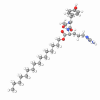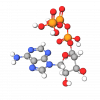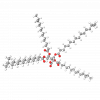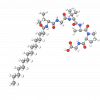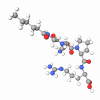It has been well documented that extracts from yeast fermentation, particularly Saccharomyces cerevisiae, have demonstrated wound-healing properties. These physiological effects, which have been variously attributed to increased cellular oxygen consumption, improved collagen synthesis, and increased blood vessel development, appear principally related to unique proteins and low molecular weight peptides that are enzymatically manufactured in the growing yeast. Undoubtedly, many of these proteins and peptides are small molecular weight fragments of larger signaling molecules and RNA and DNA fragments. To date, over 500 individual proteins have been identified from Saccharomyces cerevisiae.
It is now widely recognized that low-molecular-weight proteins, peptides, and nuclear fragments can regulate important cellular growth factors that can lead to skin healing. The exact mechanism for these remains unidentified.
Arch Personal Care Products has been manufacturing and selling unique yeast fermentation lysates for many years. Recently, they began to isolate very low molecular weight fractions of peptides (between 1000 and 3000 daltons) from these fermentation lysates. Using advanced human gene microarray surveys of these peptides to screen for activity, they have identified fractions of these yeast extracts that have shown the ability to upregulate the genes responsible for collagen and elastin production. Using sophisticated chromatographic separation technologies, they have isolated a dominant peptide fraction that appears to show the most significant impact in the gene microarray analyses.
Additional identification of the peptide fragment at the University of California, Davis Molecular Structure Facility indicated that the peptide was a hexapeptide comprised of Phenylalanine (Phe), Valine (Val), Alanine (Ala), and Proline (Pro), comprising the unique sequence Phe-Val-Ala-Pro-Phe-Pro. In the scientific nomenclature systems common for amino acids or proteins, this peptide appears as FVAPFP. They have called this peptide Peptamide™ 6 (designation: Hexapeptide-11). Employing the powerful sequencing tool BLAST2® (Washington University) available with the NCBI Sequence Viewer software to match this peptide sequence against the entire protein dataset for Saccharomyces cerevisiae, they have found that the unique sequence of amino acids that comprise Peptamide™ 6 appears in many unique proteins and genes. In particular, the amino acid sequence for Hexapeptide-11 can be found in stress-related proteins (in particular hsp70), transmembrane proteins, and many proteins whose function(s) are presently unknown.Ingredients
Manufacturing Process
Peptamide™ 6 is manufactured using fermentation biotechnology in which yeast are fed key amino acids and low molecular weight peptide fragments essential for the biosynthesis of the desired peptide. The resulting fermentation product is fractionated using proprietary filtration and chromatography systems to isolate the desired dominant peptide. The peptide, which is then separated from the crude mixture and isolated in a highly purified state, is sequenced to provide the principal amino acids of which it is comprised and the specific order of these amino acids in the peptide chain. Hexapeptide-11 was found to be comprised of Phenylalanine (Phe), Valine (Val), Alanine (Ala), and Proline (Pro) amino acids in the specific amino-acid sequence of Phe-Val-Ala-Pro-Phe-Pro.
Efficacy
In vitro data – Gene Microarray Data Peptamide™ 6 was evaluated by Gene Microarray analysis to determine the biological effect that Hexapeptide-11 has on cellular mechanisms. DNA Microarrays can generate thousands of data points related to gene expression with one experiment. This technology has become an indispensable tool for Research Biologists and is becoming more popular in the Personal Care Industry to help identify the true potential of active ingredients and brings companies a step closer to understanding what specific body or cellular functions are being affected and the potential mechanism of actions being addressed.
Human dermal fibroblasts were treated with 1% Peptamide™ 6. Cellular RNA was isolated and labeled with fluorescent tags specific for the control cells (untreated) or cells treated with the test material. The isolated tagged RNA was then applied to the gene microarray plates. The microarray slides are encoded with complementary DNA fragments for 22,000 genes from the human genome [Figure 2]. If a tagged RNA fragment meets with its complementary DNA fragment attached to the slide, the RNA binds to the slide and carries the fluorescent tag with it. In this study, they ran two plates; one was not treated (control), and the other was treated with Peptamide™ 6 before the RNA was isolated.
Computer software then allows the testing lab to overlap the two plates and creates, in a sense, a third plate of 22,000 data points. When a gene is upregulated, it appears green in the third overlap plate. When it is downregulated, it appears red. It appears yellow when there is no effect (i.e., the gene is neither upregulated nor downregulated). Therefore, every gene provides either a red, yellow, or green signal in the final plate. True values can then be isolated from spurious noise based on the fluorescence intensity. The onus is on a skilled scientist to go into the tables and retrieve the pertinent data.Results
The microarray results for Peptamide™ 6 can be classified into the upregulation of 5 key functional areas:
- Transmembrane Proteins
- Growth Factors
- Matrix Proteins
- Skin Lipid Development
- Cell Shock/Cell Stress Proteins.
Transmembrane proteins are special cellular membrane shuttling sites that move essential internal and external cellular materials through the cell membranes. Growth Factors are key enzymes responsible for the differentiation and growth of tissue, particularly fibroblasts, that can differentiate into numerous tissue types, including keratinocytes. Matrix proteins (or extracellular matrix proteins) are essential components of the extracellular matrix, giving the skin substance, elasticity, and turgor. Skin Lipids are the components that make up the lipid bilayer of the skin. The Cell Shock proteins are chaperone proteins that are excreted by cells to protect important cellular proteins from being denatured due to stress.
The upregulation of both the transmembrane proteins and cell shock protein genes is interesting as these proteins match the source of the hexapeptide from yeast. i.e., heat shock and transmembrane proteins. It is still unconfirmed, but compelling, that upregulation of a particular stress response in yeast and application of a lysate containing these elements might subsequently cause upregulation of the same response in human skin cells. More work must be done to confirm this hypothesis. The upregulation of the various growth factors, matrix proteins, and cell shock/cell stress genes is directly related to skin firming, skin renewal, and water retention. In addition, stress proteins can play a role in cellular apoptosis, the programmed cell death sequence. Upregulation of the lipid genes suggests that Hexapeptide-11 may play a role in improving skin lipid integrity and development.
